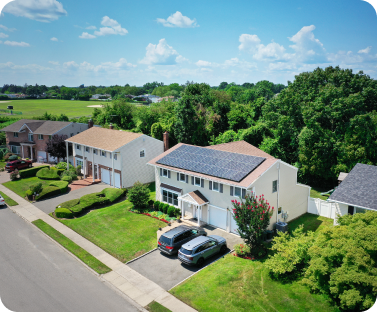
It’s easy to recycle a glass bottle or an aluminum can; all you have to do is place it in the correct bin. But did you know that solar panels are recyclable too? Although it’s not as simple as recycling everyday products like magazines or plastic bottles, the raw materials that comprise solar panels can be effectively reclaimed and reused at the end of the panel’s lifecycle.
The Importance of Solar Panel Recycling
While solar panels are made of some of the same materials that we’re used to recycling, such as glass and aluminum, they can also include heavy metals such as cadmium and lead that can leach into the environment if improperly disposed of. At this time, only 10% of solar panels are being recycled, and the projected amount of solar panel waste is estimated to reach 78 million tons by 2050.
Reducing solar panel waste is not only good for the environment, but also for the economy. The International Renewable Energy Agency determines that $450 million can be generated by 2030 from reclaiming the raw materials present in solar panels.
Despite the many benefits of solar panel recycling, there is no federal regulation requiring it. However, solar panel manufacturers and installers understand the importance of solar panel recycling and are taking matters into their own hands.
The Lifecycle of a Solar Panel
EmPower Solar exclusively installs SunPower solar panels, which are widely regarded for their reliability, efficiency, and sustainability. Most panels have a lifetime of 25-30 years, while SunPower’s are designed to last a decade longer. How? Through careful and intentional design.
Each solar photovoltaic cell is made of a single silicon crystal, giving the panel a higher conversion efficiency and increased resistance to high temperatures. SunPower’s Maxeon panels are copper-plated and resist cracking, as stress is distributed and the cells bend instead of breaking.
SunPower’s panels aren’t just designed to last longer than competing brands; they are manufactured with a closed-loop lifecycle in mind. SunPower’s E-Series and X-Series DC panels are Cradle-to-Cradle certified, meaning that they are built with safely-sourced materials and recycled at the end of the product’s life.

How Are Solar Panels Recycled?
Solar modules are made of silicon, glass, and metals like copper. The recycling process begins with crushing and grinding the solar panels into a fine, sand-like consistency. This is sent through a machine that separates the metals. These materials are then transformed into new items like glass bottles and reflective beads for roadways. This contributes to a circular and sustainable economy.
How Can I Recycle My Solar Panels?
Solar panels are lauded for the clean energy they produce. It’s equally important to keep sustainability in mind throughout the complete lifecycle of the product. We’re proud to work with SunPower to ensure that sustainability is at the forefront of the clean energy revolution. If your solar panels are broken or damaged, contact us and we’ll help you recycle them!
Say goodbye to high-energy bills and hello to worry-free solar

Say goodbye to high-energy bills and hello to worry-free solar
About the Author
EmPower Solar develops, engineers, installs, and services solar and battery systems for residential and commercial clients. Since 2003, EmPower Solar has empowered thousands of New York homeowners and businesses with 47 megawatts of distributed solar. Its vision is to create a new energy paradigm powered by clean, renewable energy for a more prosperous, healthy, and civil world. The company culture is defined by the EmPowering Way, which results in consistent 5-star customer service reviews. For more information visit empower-solar.com.